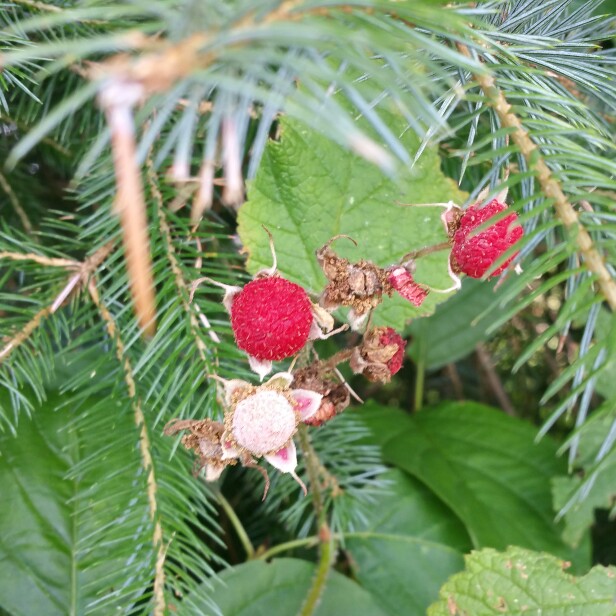
Rubus parviflorus
Thimbleberry
Thimbleberry is a fruiting plant in the rubus family found in parts of the USA. It grows in large, upright clumps, and the leaves are dark green, star-shaped with 3 - 7 lobes, and soft-textured. The thornless greyish stems are strong and flexible, and bear clusters of white - occasionally pink - fragrant flowers, which are followed by the fruit which resemble a thimble, or a deep red raspberry. Leaves turn brilliant orange to dark red in Autumn
Contributed by @khodina
-
Full sun
-
Very little water
-
Full Frost Hardy: 5F (-15°C)
-
Free draining
Common name
Thimbleberry
Latin name
Rubus parviflorus
type
Fruiting Plant
family
Rosaceae
ph
6.0 - 7.0 Acid - Neutral
Plant & bloom calendar
-
Best time to plant
-
When the plant will bloom
full grown dimensions
 0.60 M
2.50 M
0.60 M
2.50 M
Rubus parviflorus
Thimbleberry is a fruiting plant in the rubus family found in parts of the USA. It grows in large, upright clumps, and the leaves are dark green, star-shaped with 3 - 7 lobes, and soft-textured. The thornless greyish stems are strong and flexible, and bear clusters of white - occasionally pink - fragrant flowers, which are followed by the fruit which resemble a thimble, or a deep red raspberry. Leaves turn brilliant orange to dark red in Autumn
Flowering Season
From Late Spring TO Mid Summer
Pink/white blossom before the fruit.
Planting Outdoors
From Early Winter TO Early Spring
Plant pot grown blackberries in the soil after digging in plenty of well rotted manure or compost into the soil first.
Propagation by Hardwood Cuttings
From Early Winter TO Late Winter
Take hardwood cuttings of up to .3m from this years growth, making a clean from above a shoot and remove any soft growth. Nearly fill a container with fine grit at the bottom, to enable free draining, and a suitable compost. Place the cutting, having dipped he end in a rooting compound first, with a third of the cutting showing.
Harvesting
From Mid Summer TO Early Autumn
Pick when the fruits are ripe. Lovely in pies and other puddings or for making jam with.









